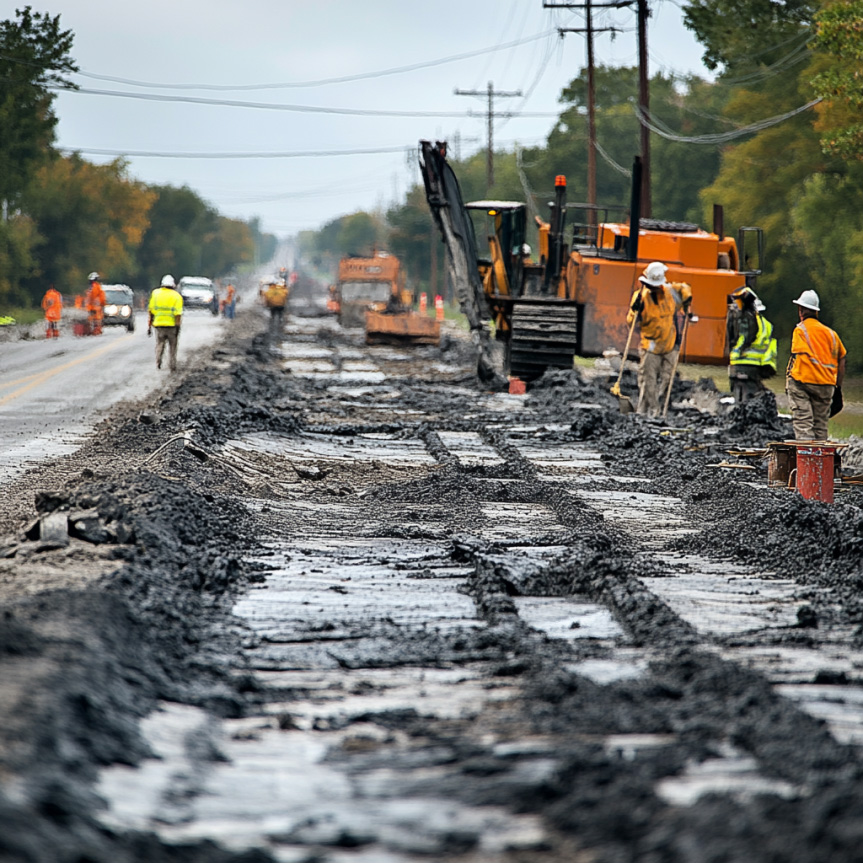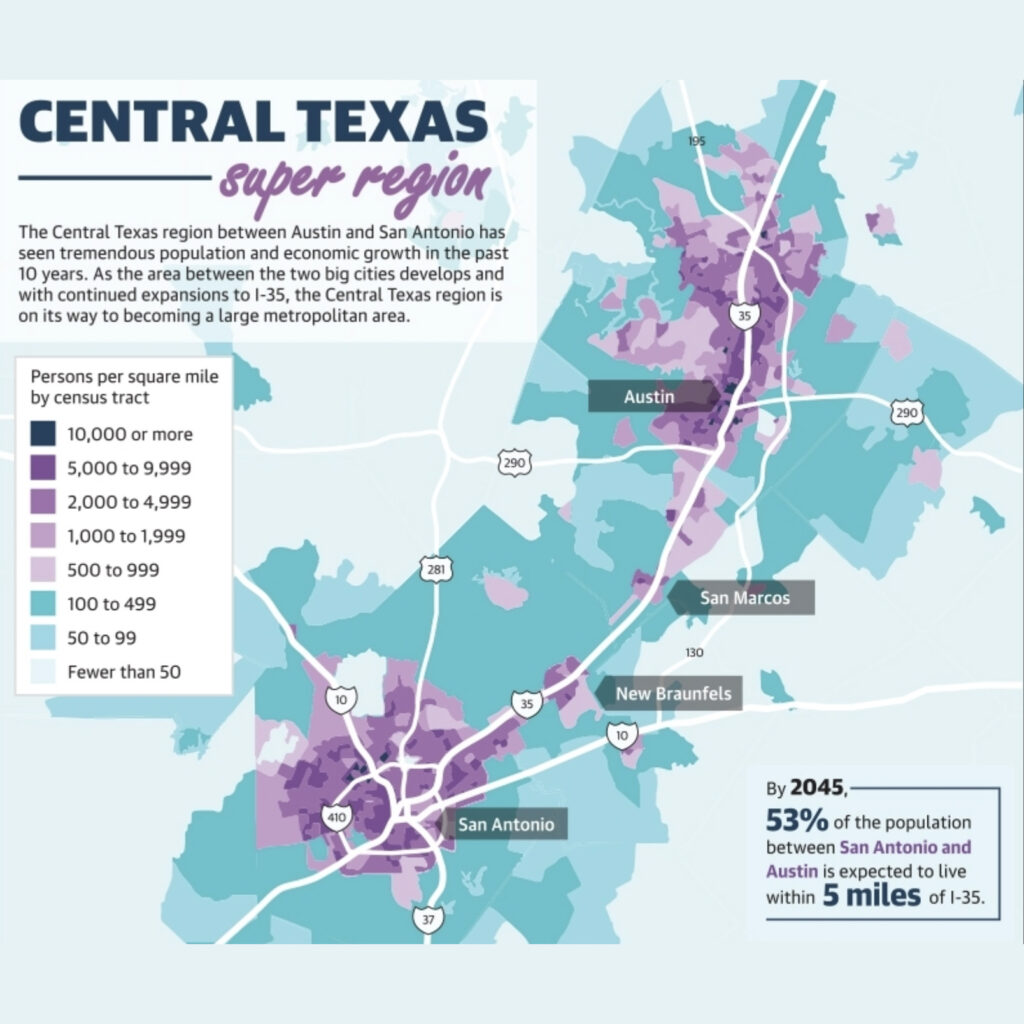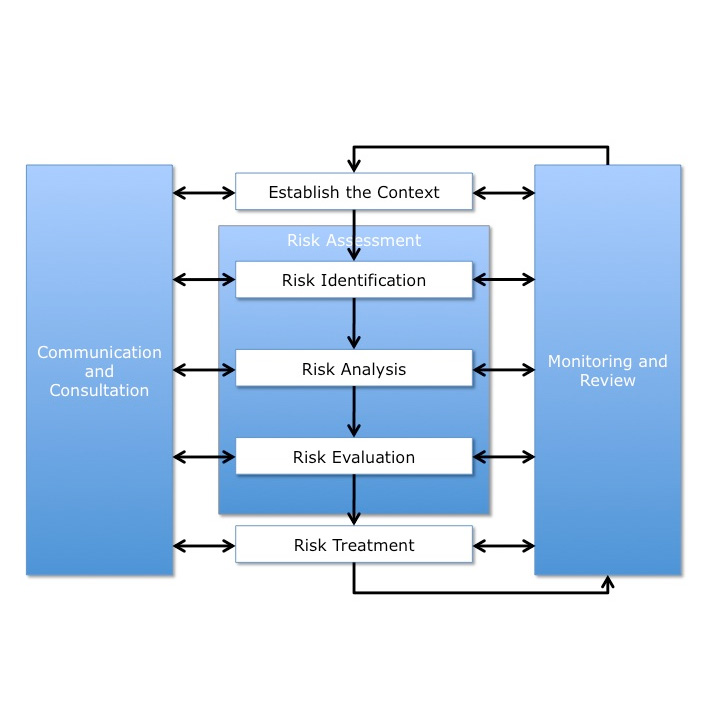“The environment is where we all meet; where we all have a mutual interest; it is the one thing all of us share.”
— Lady Bird Johnson
How Extreme Weather Is Shaping Future Capital Improvement Programs in Texas
The scorching temperatures and increasingly extreme weather conditions have become a defining characteristic of Texas summers in recent years. These events highlight the need for local governments to reassess how they approach future Capital Improvement Programs (CIP). Historically, CIP projects aimed to meet the basic infrastructure demands of a growing population. However, the realities of climate change and extreme weather events now necessitate a more comprehensive approach to municipal infrastructure development. Local governments must pivot their strategies, emphasizing climate resilience, sustainability, and long-term financial health.
Understanding Capital Improvement Programs (CIP)
A Capital Improvement Program (CIP) is a multi-year plan that outlines capital projects and their funding mechanisms. These projects often focus on the development and maintenance of public infrastructure, from roads and bridges to public safety facilities like police stations and fire departments. With rising temperatures, Texas municipalities are increasingly required to integrate climate adaptability into their CIP bond programs, ensuring that critical infrastructure can withstand future challenges.
Municipal Infrastructure Development in the Face of Extreme Weather
With temperatures regularly surpassing 100 degrees Fahrenheit, the wear and tear on municipal infrastructure is accelerating. Roads buckle, power grids falter, and water systems strain under increased demand. As municipalities plan for future growth, it’s crucial that their infrastructure is resilient to these conditions. Future CIP bond programs should incorporate designs that can withstand extreme heat, flooding, and other climate impacts to ensure long-term viability.
Community Needs Assessment and Financial Health of Municipalities
The foundation of a successful Capital Improvement Program lies in a thorough community needs assessment. Municipalities need to gather input from the public and assess vulnerabilities exacerbated by climate change, such as urban heat islands, insufficient drainage, and energy grid vulnerabilities. By listening to the community and leveraging data, local governments can develop a long-term strategic plan that addresses both immediate and future infrastructure needs.
However, climate resilience requires significant financial resources. Municipalities must balance these needs with their overall financial health, ensuring that debt levels remain manageable while also addressing the increasing demand for infrastructure improvement. Factors like debt capacity and the choice between revenue bonds vs. general obligation bonds will play a crucial role in determining how projects are financed.
Exploring Funding Sources for CIP
Securing funding for these ambitious projects remains one of the most significant challenges municipalities face. Traditional funding sources for CIP, such as general obligation bonds, remain viable, but municipalities should also consider alternative funding mechanisms like revenue bonds and grants aimed at climate resilience and sustainable development. Federal and state grants for green infrastructure, as well as public-private partnerships, can provide additional resources to support sustainable projects.
In particular, revenue bonds offer an alternative to general obligation bonds by tying repayment to the revenue generated by the projects themselves, such as utilities. This method reduces the burden on taxpayers but requires careful planning to ensure the project is financially viable over the long term.
Long-Term Strategic Planning and Sustainability
Effective long-term strategic planning ensures that municipalities can not only address immediate needs but also build for future generations. Sustainable infrastructure design should be at the core of any Capital Improvement Program, emphasizing energy efficiency, water conservation, and materials that can withstand extreme weather conditions. Infrastructure sustainability includes everything from green roofs that reduce heat absorption in urban areas to permeable pavement that allows for better stormwater management during heavy rainfall.
Municipalities should adopt sustainable development practices that are not only environmentally friendly but also financially responsible. The focus should be on creating infrastructure that will reduce maintenance costs and operate more efficiently, easing the financial burden on future taxpayers.
The Role of Community Engagement in CIP Planning
No Capital Improvement Program can succeed without active community engagement. Involving residents in the planning process fosters a sense of ownership and ensures that projects meet the community’s actual needs. In the context of extreme weather, community members often provide valuable insight into how infrastructure failures have impacted their day-to-day lives. Their input is crucial for creating adaptable, resilient infrastructure.
Moreover, engaging the public is essential for securing bond measures, as voters need to understand the importance of the projects to approve necessary funding. Community outreach should clearly communicate the economic, social, and environmental benefits of infrastructure investments, particularly those aimed at increasing resilience against extreme weather.
Project Management Frameworks and Public Safety Considerations
Managing the multitude of projects that fall under a CIP bond program requires a robust project management framework. Local governments need to adopt frameworks that account for delays, cost overruns, and environmental impacts, particularly when extreme weather conditions are increasingly causing disruptions. Strong oversight ensures that projects are delivered on time and within budget, even when unexpected challenges arise.
For instance, public safety facilities need to be at the forefront of any CIP planning. Extreme weather events, such as hurricanes, wildfires, and heatwaves, strain emergency services and critical response infrastructure. Municipalities should prioritize upgrading fire stations, emergency shelters, and police stations to ensure they are equipped to handle these stresses.
Economic and Social Impacts of CIP
The economic and social impacts of well-planned CIPs extend far beyond the immediate construction period. Investing in climate-resilient infrastructure can reduce future costs associated with repairs and replacements, minimize economic disruption from infrastructure failures, and improve the quality of life for residents. Furthermore, upgrading infrastructure can stimulate the local economy by creating jobs, increasing property values, and attracting new businesses.
On the social front, infrastructure improvements aimed at mitigating extreme weather impacts can directly enhance the well-being of vulnerable populations, including the elderly, low-income communities, and those living in areas most affected by climate change. Accessible public transportation systems, reliable power grids, and resilient water supply systems contribute to the overall safety and health of the community.
Conclusion: Building a Resilient Future Through Sustainable Development
As Texas municipalities face the growing threat of extreme weather, it’s clear that sustainable development must guide the future of Capital Improvement Programs. From addressing public safety facilities to planning for long-term infrastructure sustainability, municipalities must adopt strategies that account for climate resilience. Local governments should leverage innovative funding sources for CIP, engage the community, and carefully manage their debt capacity while prioritizing the economic and social well-being of their residents.
Municipal infrastructure development in Texas must evolve with the times, ensuring that the needs of today are met without compromising the future. Through strategic planning, smart investments, and community-driven projects, municipalities can create a resilient and sustainable infrastructure that withstands the challenges posed by extreme weather events.
At Front Line Advisory Group, we manage Capital Improvement programs to ensure they are completed on time and within budget. We make sure every dollar is used wisely to improve our community. For more information or to start your project, contact us at info@frontlineadvisorygroup.com.












